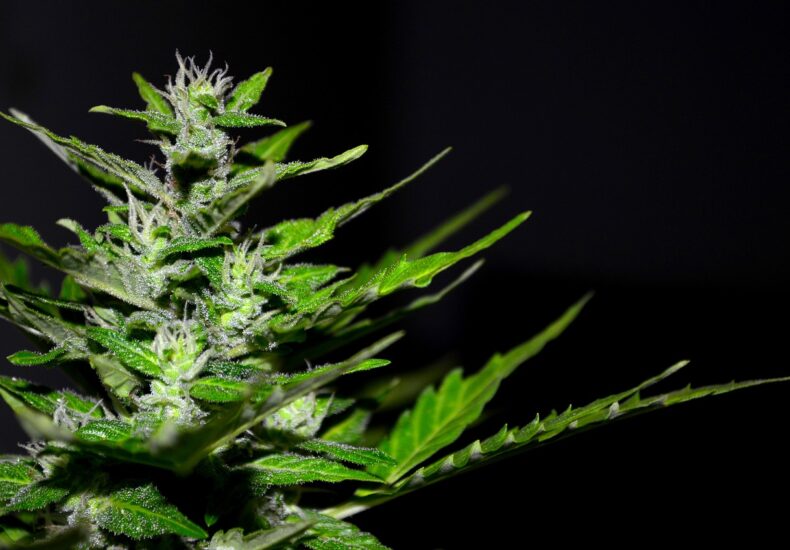
THCA Flower and Its Potential Benefits for Pain Relief
In recent years, the exploration of cannabis and its derivatives has gained significant momentum, particularly in the context of pain management. Among the various compounds found in cannabis, THCA (tetrahydrocannabinolic acid) has emerged as a subject of interest. This article delves into the potential benefits of THCA flower from indacloud.co for pain relief, examining its properties, mechanisms, and real-world applications.
Understanding THCA: The Basics
THCA is a non-psychoactive cannabinoid found in raw and live cannabis plants. Unlike THC (tetrahydrocannabinol), which is known for its psychoactive effects, THCA does not produce a “high.” This makes it an appealing option for individuals seeking therapeutic benefits without the mind-altering effects associated with THC.
THCA is the precursor to THC. When cannabis is heated through smoking, vaping, or cooking, THCA undergoes decarboxylation, converting into THC. This transformation is why raw cannabis does not produce psychoactive effects until it is heated.
The Science Behind THCA and Pain Relief
Research into THCA is still in its early stages, but preliminary studies suggest that it may offer anti-inflammatory and analgesic properties. These attributes are particularly relevant for pain management, as inflammation is a common underlying factor in many pain-related conditions.
THCA interacts with the body’s endocannabinoid system (ECS), a complex network of receptors and neurotransmitters that play a role in regulating various physiological processes, including pain perception. By modulating the ECS, THCA may help reduce pain and inflammation.
Anti-Inflammatory Properties
- THCA has been shown to inhibit the production of pro-inflammatory enzymes, potentially reducing inflammation at the source.
- Animal studies have demonstrated that THCA can decrease inflammation in conditions such as arthritis, suggesting its potential for human applications.
Analgesic Effects
- THCA may influence pain pathways by interacting with specific receptors in the ECS, leading to reduced pain perception.
- Some anecdotal evidence from patients using THCA-rich products indicates a decrease in chronic pain symptoms.
Real-World Applications and Case Studies
While scientific research is ongoing, anecdotal evidence and case studies provide valuable insights into the potential benefits of THCA for pain relief. Patients with chronic pain conditions, such as fibromyalgia and arthritis, have reported positive outcomes when using THCA-rich products.
One case study involved a patient with rheumatoid arthritis who incorporated THCA into their treatment regimen. Over several months, the patient experienced a significant reduction in joint pain and swelling, allowing for improved mobility and quality of life.
Another example includes individuals with fibromyalgia who have found relief from muscle pain and fatigue through the use of THCA tinctures and topicals. These personal accounts highlight the potential of THCA as a complementary approach to traditional pain management strategies.
THCA Flower: Consumption Methods
For those interested in exploring THCA for pain relief, various consumption methods are available. Each method offers unique benefits and considerations, allowing individuals to tailor their approach based on personal preferences and needs.
Raw Consumption
- Consuming raw cannabis leaves or flowers in smoothies or salads preserves THCA in its natural form.
- This method avoids the psychoactive effects associated with THC, making it suitable for daytime use.
Tinctures and Oils
- THCA tinctures and oils provide a convenient way to incorporate THCA into daily routines.
- These products can be taken sublingually for faster absorption or added to food and beverages.
Topicals
- THCA-infused creams and balms can be applied directly to the skin, targeting localized pain and inflammation.
- This method is particularly beneficial for joint pain and muscle soreness.
Challenges and Considerations
Despite the promising potential of THCA for pain relief, several challenges remain. The legal status of cannabis and its derivatives varies by region, affecting accessibility and availability. Additionally, the lack of standardized dosing guidelines can make it difficult for patients to determine the appropriate amount for their needs.
Quality control is another concern, as the cannabis industry is still evolving. Ensuring that products are free from contaminants and accurately labeled is essential for consumer safety and efficacy.
Conclusion
THCA flower presents a promising avenue for pain relief, offering anti-inflammatory and analgesic properties without the psychoactive effects of THC. While scientific research is still developing, anecdotal evidence and case studies suggest that THCA may benefit individuals with chronic pain conditions. As the cannabis industry continues to evolve, further research and standardization will be key to unlocking the full potential of THCA for pain management.
- Browsing Legalities: The Condition of THCA Flower in Your State
- The Science Behind CBD Oil for Pets: What Every Pet Dog Parent Should Know
- CBD Oil vs. Traditional Medications: Which is Best for Your Canine’s Anxiousness?
- Mushroom Coffee for Weight Reduction: Myth or Fact?
- Common Errors in 401k to Gold Individual Retirement Account Rollovers and Just How to Prevent Them